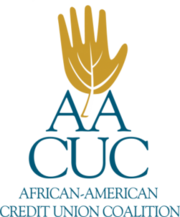Every great conference has a theme. Sometimes the theme is intentionally set by the event coordinators and splashed everywhere leading up to the conference and witnessed once you are onsite. Other times, without any coordination among speakers, themes are innocuously emergent as a throughline across multiple sessions as relevant and timely topics are discussed.
As I reflect on last month’s CU Leadership Convention, presented in partnership with the African-American Credit Union Coalition (AACUC), I could not shake the theme of “partnership.” The concept of partnership was not an explicit theme from either the event organizers or speakers. Those themes were compelling leadership topics like trust, empathy, connection and contribution.
The reason why partnership was likely on my mind was because it was the first time AACUC collaborated with another organization to deliver a variation of our legendary annual conference. By doing so, we experienced partnership in action—sharing a common vision, leveraging each other’s strengths, offering different lenses and perspectives, gaining consensus and sometimes agreeing to disagree. Together, we served over 1,000 attendees with education and entertainment, honored two Pete Crear Lifetime Achievement Award recipients and presented the first ever Renée Sattiewhite Neoteric Changemaker Award.
Partnership is not a new concept for credit unions. Consider it an offshoot of the cooperative principle: Cooperation Among Cooperatives. This principle states that credit unions serve their members most effectively and strengthen the cooperative principles by working with other cooperatives through local, state, regional, national and international structures.
In today’s rapidly evolving financial landscape, credit unions face a unique set of challenges and opportunities. Amidst changing member expectations, technological advancements and increased regulatory pressures, one thing remains constant: the power of partnership. For credit unions, forming strategic partnerships is not just an option—it’s a necessity for survival and growth.
Partnership can look like a myriad of opportunities for credit unions: a fintech engagement to produce a new membership application experience, a sponsorship with a community leader to garner greater impact, entering a shared branching environment to expand your credit union’s footprint and your members’ access, and even outsourcing critical functions of your organization like human resources, project management, learning and development or core services as a force multiplier for your staff and expertise.
Whether you are an industry partner, CUSO, credit union or the like, consider the following five tips for unleashing opportunities through partnerships.
First, align your purpose. Everything begins with your why. Partners, whether in business or personal relationships, must be connected and in agreement on their purpose, which includes their mission and the purpose for uniting to achieve that mission collectively rather than individually.
Second, know your non-negotiables. If you have ever watched House Hunters or Love It or List It featuring married couples, the “must-haves” on each of their lists are often different. Sometimes these dealbreakers are dismantled as unrealistic expectations given market conditions or better yet, reality. In any case, their list of non-negotiables is stated at the beginning of the show, long before any house tour or demolition is scheduled. The same concept should be true in entering a partnership. State your non-negotiables upfront and as a bonus, explain the why behind the non-negotiable. You may be able to achieve the same or similar outcome when more context is provided.
Third, communicate early and often. Partnerships are relationships. I have heard countless times that us credit union professionals are in the relationship business. No matter if it is a new partnership or a long-standing partnership, communication is imperative. In fact, for new partnerships, establishing communication ground rules—who needs to know, how and when does something need to be communicated, and the most effective communication method for each person just to name a few—is mission critical. Setting communication expectations and honoring your ground rules demonstrates respect, annihilates assumptions, reduces the propensity of misinformation and fosters an environment where trust and co-creating solutions can thrive.
Fourth, let the shared outcome drive priorities. It is easy to get caught up in the possibilities of a partnership. Phrases like “We could do this…” or “What we’ve done in the past…” or “We always do…” can have detrimental repercussions if they are not managed constructively. Keep in mind, bringing organizations together in partnership brings multiple—and sometimes conflicting and competing—systems and priorities together. To reduce unnecessary noise and complexities, it is vital that you remain steadfast on the shared outcomes you are trying to achieve and let those shared outcomes influence how work is prioritized. Your shared outcomes will help you discriminately decipher between what is a must-have, nice-to-have and good-idea-but-not-going-to-happen.
Lastly, decide together. No one likes decisions by committee. However, the greatest threat to a partnership is losing trust. Trust can be eroded when decisions are made in a vacuum or consideration is not given to your partner. Remember in partnership, decisions affect both brands. Unilateral decision making will likely do more harm than good. When decisions must be made, be intentional to resolve conflict and maintain harmony through concession, consensus and ultimately gain commitment from each other.
Without a doubt, there is power when you join forces with another entity. When done right, partnership strengthens your core capabilities and competitive advantage. It is that force multiplier that allows you to deliver your unique value proposition differently and at a scale you could not achieve on your own. As the African proverb states, “If you want to go fast, go alone; if you want to go far, go together.”
During our cross-functional conference event planning meetings, we often heard the phrase “the AACUC effect.” In short, this referred to the power of the AACUC brand bringing new faces and new opportunities to the established credit union convention. If you were to examine your organization’s partnerships, what effect do you bring to the table? Or through a different lens, what profound effect is missing from your organization and would be achieved with the right partner? Opportunities abound and are waiting to be released within our credit union movement in pursuit of partnership.








